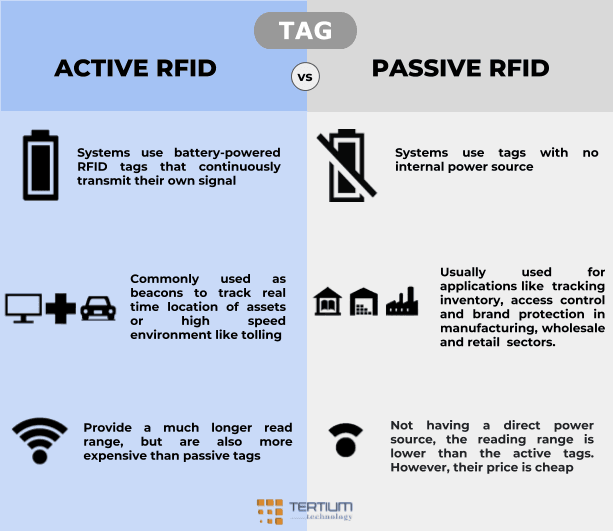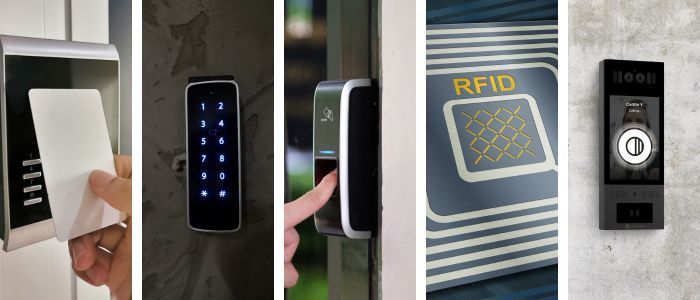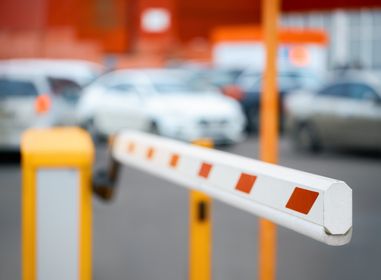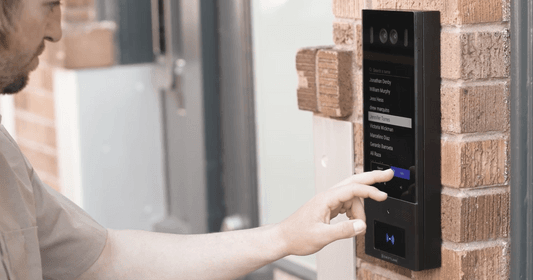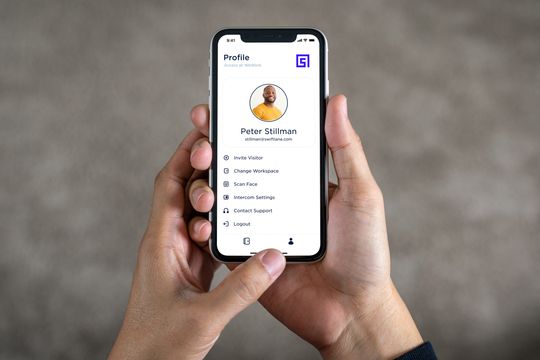Car RFID tags are rapidly changing how we manage and secure vehicle access across various industries. From enhancing security to streamlining operations, RFID technology offers numerous benefits for commercial and residential properties.
In this comprehensive guide, we’ll explore the ins and outs of car RFID tags, including their pros and cons, the differences between active and passive RFID, and the industries that can benefit from their use. We’ll also discuss gate access control systems, highlighting the advantages of video intercoms for improved safety.

Table of contents
- What Are Car RFID Tags?
- How Do RFID Tags Work?
- Active vs. Passive RFID Tags
- Benefits of Car RFID Tags for Vehicle Access Control
- Industries Benefiting from Car RFID Access Control
- Types of Access Control for Gates
- Essential Tips for Buying and Setting Up a Gate Entry System
- Cell Phone-Based Gated Community Access Control
- Advantages of Video Intercoms as Gate Access Control Systems
Suggested Posts:
- Gated Entry Systems – Tips to Reduce Costs, Improve Safety and Convenience
- Buyer’s Guide – Upgrading your Gated Entry Access Control and Intercom
- The RFID Access Control Breakdown: What You Need to Know
What Are Car RFID Tags?
Car RFID tags are specialized Radio Frequency Identification (RFID) tags designed specifically for use in vehicles. These tags serve various purposes, from vehicle access control to fleet management, inventory tracking, and even automated toll collection. Like other RFID tags, car RFID tags contain a microchip and an antenna, which work together to store and transmit information wirelessly. They are often affixed to the windshield or rearview mirror of a vehicle, making it easy for RFID readers to identify and track the vehicle as it moves through designated areas.
Car RFID tags offer several advantages over traditional methods of vehicle identification, such as manual VIN number checks or barcode scanning. The contactless nature of RFID technology allows for quick and accurate identification of vehicles without requiring line-of-sight or physical interaction. This streamlined process not only saves time but also reduces the risk of human error. Additionally, car RFID tags can be read at various distances and speeds, providing flexibility in diverse applications, such as parking lots, security gates, and toll booths. By leveraging the power of RFID technology, car RFID tags have revolutionized the way vehicles are identified, tracked, and managed across a wide range of industries.
How Do RFID Tags Work?
RFID (Radio Frequency Identification) tags are designed to store and transmit information through radio waves, enabling contactless communication between the tags and RFID readers. Each RFID tag consists of a microchip and an antenna, which work together to share data with the reader. The RFID reader, which is responsible for sending and receiving radio frequency signals, emits radio waves that activate the tags within its range. Upon activation, the RFID tags transmit their unique identification data back to the reader.
The communication process between RFID tags and readers is facilitated by the antennas in both components. When the RFID reader sends a radio wave signal, the RFID tag’s antenna receives it and sends a response, which contains the tag’s encoded data. The RFID reader’s antenna then captures this response and decodes the information. This exchange of information is nearly instantaneous and can occur over various distances, depending on the type of RFID system used. Once the reader decodes the information from the RFID tag, it can then be processed or stored in a database for further analysis, tracking, or decision-making. This seamless and efficient communication method is what makes RFID technology widely popular in numerous industries, including logistics, manufacturing, healthcare, and retail.
Active vs. Passive RFID Tags
There are two main types of car RFID tags: active and passive. Each type has its advantages and limitations, which we’ll explore below.
Passive RFID Tags
- No battery is required; powered by the signal from the reader
- Read range up to 20 meters (65 feet)
- Less expensive than active RFID tags
- Passive RFID tags are commonly used for vehicle access control, fuel dispensing, border crossing identification, vehicle inventory, and fleet management
Pros:
- Cost-effective
- Low maintenance, as no battery replacement is needed
- Smaller and lighter than active tags
Cons:
- Limited read range
- Signal may be affected by metal and glass
- Requires line of sight to be read
Active RFID Tags
- Contains a battery, allowing for a longer read range and signal broadcast
- Read range up to 2 km+ (1.24+ miles)
- Can be concealed on the vehicle without requiring line of sight
- Able to detect at speeds over 650 km/h (400 mph) from any angle
Pros:
- Longer read range
- More reliable signal in challenging environments
- Can be used for high-speed applications
Cons:
- More expensive than passive RFID tags
- Requires battery replacement, increasing maintenance needs
- Larger and heavier than passive tags
In both cases, the RFID reader receives the data transmitted by the RFID tag and processes it according to the specific application’s requirements. This could involve granting access to a gated area, recording vehicle movement, or updating inventory information. The information collected can then be used to improve efficiency, security, and overall management of vehicles and resources.
Benefits of Car RFID Tags for Vehicle Access Control
Car RFID tags offer numerous advantages for vehicle access control in both commercial and residential settings. Here are some key benefits:
- Enhanced Security: RFID tags can help improve security by restricting access to authorized vehicles, ensuring that only permitted individuals can enter and exit a facility.
- Efficient Access Control: With RFID technology, vehicles can enter and exit a facility quickly and smoothly, reducing wait times and improving overall efficiency.
- Cost-Effective: RFID tags are an affordable solution for vehicle access control, requiring minimal maintenance and offering a lower total cost of ownership compared to other access control technologies.
- Scalability: RFID systems can be easily scaled to accommodate an expanding facility or increasing number of vehicles, ensuring a future-proof solution.
- Real-Time Monitoring: RFID tags enable real-time tracking and monitoring of vehicles, providing valuable data for decision-making and security purposes.
Industries Benefiting from Car RFID Access Control
Car RFID access control can be advantageous for various industries, each with its specific needs that can be addressed using RFID technology. These industries include, but are not limited to:
- Office buildings
- Logistics sites
- Production sites
- Government facilities
- Healthcare institutions
- Educational establishments
Types of Access Control for Gates
There are several types of gate access control systems available, each with its pros and cons. Here is an overview of the most common gate access control methods and their usage percentages:
- Key cards (30%): Key cards are a popular and cost-effective option for gated properties. They use magnetic stripes, barcodes, or embedded chips to grant access.
- Keypads (25%): Keypads require users to enter a unique code to gain entry. They offer a straightforward, cost-effective solution but may lack the security of other options.
- Biometrics (15%): Biometric systems, such as fingerprint or facial recognition, provide a high level of security by ensuring that only authorized individuals can access the property.
- RFID tags (20%): As discussed earlier, RFID tags offer a secure and efficient solution for vehicle access control. They are increasingly popular in commercial and residential settings.
- Video intercoms (10%): Video intercom systems allow property owners or security personnel to see and communicate with visitors before granting access. This method provides an additional layer of security.
Essential Tips for Buying and Setting Up a Gate Entry System
Investing in a gate entry system is a crucial decision for any residential or commercial property. It’s vital to select the right system that caters to your unique needs, budget, and preferences. In this guide, we will discuss some key tips to consider when buying and installing a gate entry system.
Unified Access Control for Visitors and Residents
Opt for a single system that manages both visitor and resident access instead of separate systems. It should incorporate options like an intercom for visitors and entry methods for residents, such as RFID gate access, clickers, or other alternatives. A unified system simplifies management, cuts costs, and offers a seamless experience for all users.
Video Intercom vs. Telephone
Telephone line systems are becoming costly and are gradually being replaced in many regions. A video intercom delivers more user-friendly choices and lower long-term expenses. Additionally, it enhances security by allowing you to see who is at the gate before granting entry.
Cloud-Based Access Management
Ensure the gate system you select integrates with your building’s overall access control system, like fob readers and door access, to minimize maintenance expenses and overhead. Cloud-based access management systems, such as Swiftlane, offer a cohesive system that can control access to your entire property, including gates, fob readers, mobile app-based access, and individual unit access.
Wireless vs. Wired Systems
Inquire with the manufacturer about providing cellular connectivity instead of running conduits to each gate. This approach can be more cost-effective and eliminates the need for extensive wiring.
Mobile App
Check if the system you choose includes mobile app-based access as a contemporary amenity. This feature allows for effortless access for both residents and visitors and can be used alongside clickers and vehicle tags.
Vehicle Tags over Garage Clickers
Vehicle tags are more cost-effective and convenient than garage clickers. They are passive, eliminating the need for battery replacements, and are automatically detected, so there’s no need to push anything.
Integration with the Entire Building Access Control
Previously, gate, fob, and door access systems were disjointed. Nowadays, manufacturers like Swiftlane offer a unified system that can control access to your whole property, reducing costs and delivering a superior experience.
Weather and Vandal Protection
Ensure the system you choose has a minimum IP65 rating for weather protection and a high IK rating (ranging from 1-10, with 10 being the highest impact protection) for vandal protection. This guarantees that your system will function correctly in harsh weather conditions and is safeguarded against vandalism.
Remote Maintenance
Cloud-based systems, like Swiftlane, can be remotely managed and serviced, accelerating service calls and reducing maintenance costs. This offers added convenience and reassurance, knowing that your system is maintained by professionals.
In conclusion, these are just a few essential tips to bear in mind when purchasing and installing a gate entry system. It’s important to choose a system that meets your specific needs, budget, and requirements. Conducting thorough research and partnering with a reliable provider can help ensure you make the right choice for your property.
Cell Phone-Based Gated Community Access Control
Gone are the days when you had to carry a physical clicker or fob to gain access to your gated community or building. With the advancement of technology, cell phone based gate access has become the new norm. This method of access not only provides enhanced security, but it also offers unmatched convenience.
One of the major benefits of cell phone based gate access is the ability to grant or deny access from anywhere. Property managers or homeowners can grant temporary access to guests or contractors, without having to be physically present. This eliminates the need for manual intervention and saves time.
Another advantage of cell phone based gate access is that it eliminates the need for physical fobs or clickers, which can get lost or damaged. With a cell phone based system, access can be revoked or reissued with a simple tap on a smartphone. This makes the system more secure and convenient
Additionally, cell phone based gate access integrates seamlessly with other building access control systems, such as fob readers and door access. This integration creates a unified system that can be managed from one central location, reducing maintenance costs and creating a better overall experience.
Finally, many cloud based systems, such as Swiftlane, can be managed remotely and serviced remotely, speeding up service calls and reducing maintenance costs.
Advantages of Video Intercoms as Gate Access Control Systems
Video intercoms are an excellent choice for gate access control, offering numerous benefits for commercial and residential properties. Here are some of the key advantages:
- Enhanced Security: Video intercom systems allow property owners or security personnel to verify the identity of visitors visually and audibly before granting access. This added layer of security can help prevent unauthorized access and deter criminal activity.
- Visitor Management: With a video intercom system, property owners can easily manage and track visitors, ensuring that only authorized individuals are granted access.
- Remote Access Control: Many video intercom systems are compatible with smartphones or other devices, allowing property owners to control access remotely. This feature provides added convenience and flexibility.
- Improved Communication: Video intercoms facilitate clear communication between visitors and property owners or security personnel, ensuring that misunderstandings or miscommunications are minimized.
- Integration with Other Security Systems: Video intercoms can often be integrated with other security systems, such as surveillance cameras or access control software, creating a comprehensive security solution.
Conclusion
Car RFID tags are revolutionizing vehicle access control and security, offering numerous benefits for both commercial and residential properties. By understanding the differences between active and passive RFID tags, their pros and cons, and the industries that can benefit from their use, you can make an informed decision about the best access control solution for your property.
In addition to RFID tags, other gate access control systems, such as video intercoms, offer significant advantages in enhancing security and convenience. Key considerations for buying and setting up a gate entry system involve selecting a unified system that manages access for both visitors and residents, preferring video intercoms over traditional telephone lines, confirming the gate system’s compatibility with the building’s overall access control, examining wireless or cellular connectivity options, contemplating mobile app-based access, opting for vehicle tags rather than garage clickers, integrating with the entire building access control, ensuring the system is resistant to weather and vandalism, and verifying that the system supports remote management. By carefully considering your specific needs and the available options, you can select the optimal access control system for your property, ensuring a safe and secure environment for years to come.
If you want a consultation and quote for upgrading your building gate access system, we recommend requesting a quote from Swiftlane. With their unified system, they can manage access to the whole property, including gate access, fob readers, mobile app based access, and individual unit access, reducing costs and improving the overall experience.
Get a Quote from Swiftlane for A Gated Entry System
Reach out to Swiftlane for a free consultation or quote for upgrading your gated entry system


